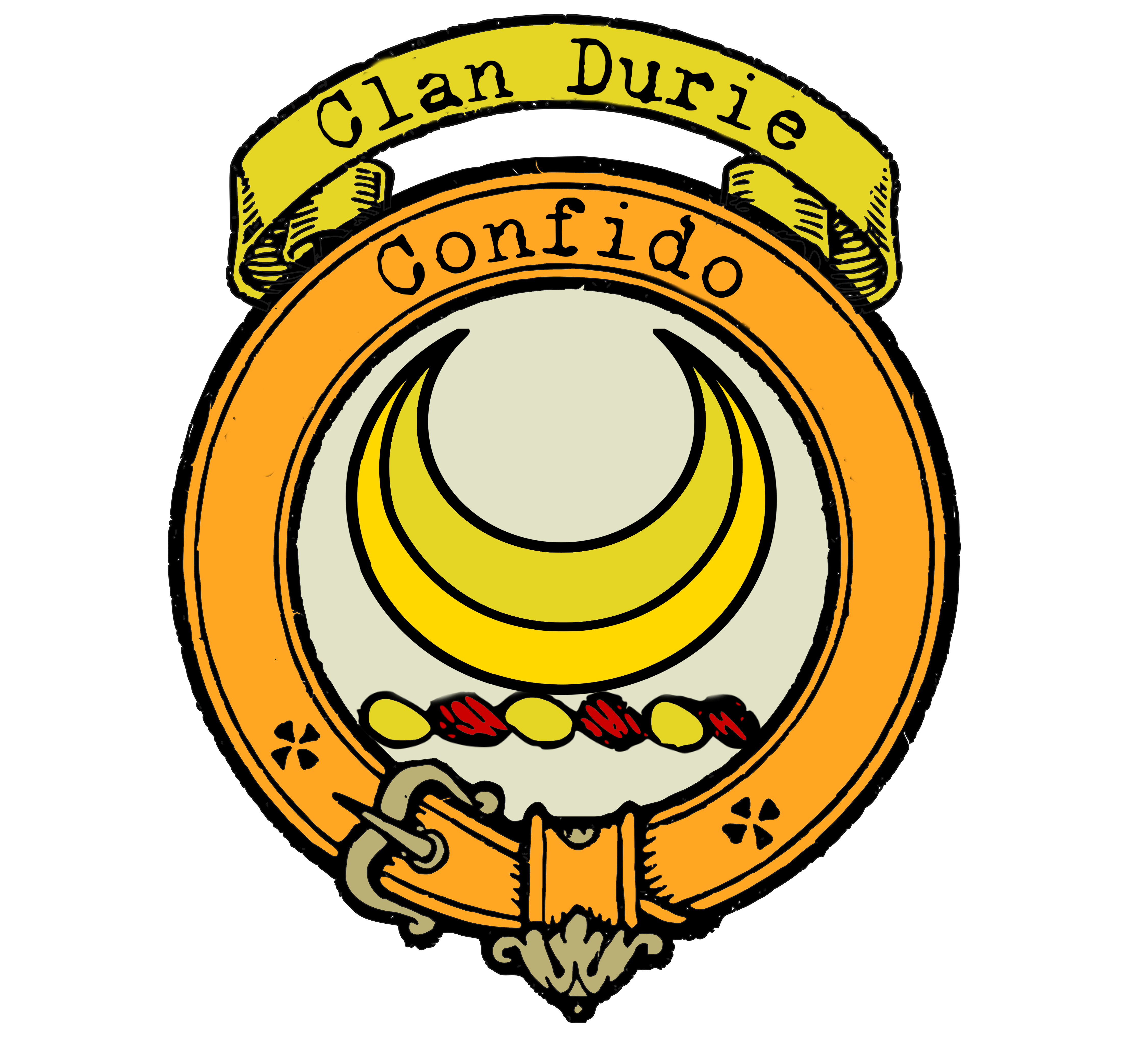Durie Clan
|
|
CREST: A crescent Or MOTTO: Confido TRANSLATION: I trust |
| The Durie family is an ancient Scottish clan with a long and fascinating history. While the origin of the name is uncertain, it is thought to derive from the French “Du Roi,” indicating that the family probably came to Britain with the Normans. Some research suggests that they may have come to Scotland as part of the entourage of Queen Margaret in 1069. They settled in Fife, where they rose to prominence as administrators to Princess Joan, sister of Henry III of England, who married Alexander II.
The Duries’ prominence in Fife can be seen throughout the thirteenth and fourteenth centuries, where the name appears in various important charters. Duncan de Dury was a witness for Malise, Earl of Strathern, around 1258. Other documentary references include Francis de Durey (c. 1250), Malisius (Malise) de Douery (c. 1350), Michael de Dourey (c. 1373), John de Douery (c. 1406), and Richard de Douer (1405); it is from the latter individual that the main line is descended. Abbot George Durie (1496-1572) attained high position in both Church and State. He was Commendator and the last Abbot of Dunfermline before the Reformation. He appeared in Parliament on several occasions between 1540 and 1554 and was appointed an Extraordinary Lord in July 1541. He became a Lord of the Articles and a member of the Governor’s ‘Secret Counsale’ in 1543 and a Lord of Council and Session and Kepper of the Privy Seal a year later. A staunch supporter of Queen Mary, his position at court was well established under her and her mother, the Queen-Dowager. The Duries’ strong adherence to Rome was continued by George’s sons, George and John, who were educated at the Scot’s Colleges in Paris and in Louvain. John joined the Jesuits and was implicated in the conspiracy to release Mary, Queen of Scots and to depose Elizabeth I of England. In the later seventeenth century, a subsequent George Druie was a captain in Louis XIV’s Scots guards and also a provost of Dunfermline. Several of his brothers fought in Flanders, and a Belgian family line, ‘du Ry,’ has been traced to them. The Durie family was chiefless for some time until the recognition of 1988 of Lt. Col. Raymond Varley Dewar Durie of Durie. He established his descent through his grandmother, Elizabeth Durie of Craigluscar, from Abbot George. He served in the Argyll and Sutherland Highlanders for 35 years and was in Shanghai when it fell to the Japanese; he escaped by making a journey of 2,000 miles to Chunking for which he was mentioned in dispatches. Today, the Durie family has a worldwide presence, with members living in many different countries. The clan is represented by the Durie Family Society, which is dedicated to preserving the history and heritage of the family. The society organizes events and gatherings for members, and works to promote the family’s history and traditions. |
|
Citations:
|
|

 Purchase @ Redbubble
Purchase @ Redbubble
Purchase @ Amazon.com
Purchase @ Amazon.co.uk
